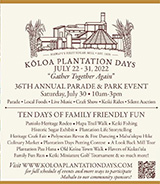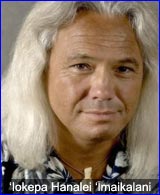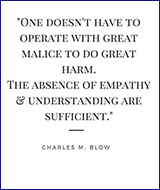The Theft of Hawai'i
April 4, 2015
In 2013 Ben Cosgrove wrote, "Paradise, as we all know, exists only in fairy tales — or, if a paradise did once exist in the Pacific, it long ago gave way to the complex, ambiguous and often politically fraught realities of the modern world." [1]
In an example of this Clash of Civilizations, protesters on the island of Hawai'i, Big Island as it's commonly called, blocked a road this week in an effort to prevent construction of a giant telescope near the top of Mauna Kea, which Native Hawaiians claim is sacred to their culture.
Mauna Kea is a dormant volcano that stands 13,796 ft (4,205m) above sea level. This makes the peak the highest point in the state of Hawai'i. Yet Mauna Kea can be considered the tallest mountain in the world if one measures from the peak to base, which is underwater. In this manner, depending on how the calculation is made, the height is 32,696 ft (9,966m) to 56,447 ft (17,2015m). Mount Everest comparatively, highest mountain on the planet, reaches some 29,029 ft (8,848m) above sea level.
The photo below highlights Dustin Barka, recent mayoral candidate on Kaua'i, and supporters, as they stand before the heavy construction equipment. "We will stand in front of your bulldozers; we will protect our sacred spaces. The time is now—rise and shine." Trent Egan Coffin, posting on Facebook wrote:
"Mauna Kea is not a place for telescopes nor does science need to develop any buildings atop any mountain in Hawaii. Hawaii is a small place considering the rest of the world, no development should be constructed if the repercussions, negatively effect, the islands people, or the generations to come. The proposed telescope will poison the largest water shed in Hawaii. Water is essential to life, there for the idea and the plan of any more telescopes on Mauna Kea must be terminated."

Native Hawaiians Fight for Their Land and Culture:
We will stand in front of your bulldozers;
We will protect our sacred spaces.
The time is now—rise and shine.
While I respect the concerns and opinion of the Hawaiian 'ohana, I wonder if their ancestors would deny such a project. Ancestral Hawaiian held science in great respect. They also cherished the stars in heaven. The last king, David Kalākaua, sometimes called The Merrie Monarch, commissioned the British to develop an observatory on Mauna Kea. He was a progressive who brought electric light to O'ahu.
The Native Hawaiian or Kanaka Maoli people do not admit their own history. They blame White Europeans for the loss of their land. However, it was a young Kamehameha who attacked and killed his cousin, Kiwalao, to take control of the islands against the wishes of the preceding king.
In the 30-some years of war, various Polynesian Kanaka tribes partnered with external forces to acquire weapons of mass destruction that they turned on their brothers and sisters. Outsiders didn't murder the Kanaka; Kanaka murdered the Kanaka.
SEE: the TRUE history of Native Hawaiians or Kanaka Maoli.
Polynesian Cain vs Abel: Native Hawaiians Teach their Keiki to Hate
It's clear Native Hawaiian groups opposing the project do not oppose the telescope itself. They simply disagree with the construction choice on Mauna Kea. I wrote to my friends, Dustin and supporters, who stand in opposition to the project that brings in over $220 MILLION to the state each year.
Heroic brothers and sisters ... all thank you for your courage. In my humble opinion, Queen Lili'uokalani and King Kamehameha would welcome this development. This project searches deep into the heavens; and as such, peers into the face of Akua.
As we learn more about nature, we learn how precious is the 'Aina. Society develops Aloha.
Rather than prevent construction, demand the facility benefit the keiki of Hawai'i; provide govt grants to fund education programs and our keiki in schools; require Hawaiian families represented in employment and administration; create a partnership with the Kingdom; and ensure protection of the 'Aina and scared cultures.
Navigating the stars in heaven has always been the Hawaiian way.
Aloha
And, what is the Hawaiian way? Few mainland Americans have heard anything except stories of beautiful weather, pristine beaches, amazing surfing, seductive hula and mouth-watering pineapple. These are features of Hawai'i, but it's not Hawai'i.
Cosgrove: "For instance, how many Americans in the contiguous 48 know anything at all about the nonviolent 'democratic revolution' of labor strikes and major acts of civil disobedience that roiled the islands in 1954, reshaping Hawaii's political landscape for all time?"
How many Americans in the contiguous 48 know that the U.S. government forced Queen Lili'uokalani to abdicate her thrown at gunpoint in 1893? Locals know here. They never forget.
Cosgrove: "The first proposal to make Hawaii a state was put forward more than a hundred years ago when President Franklin Pierce cast his eyes across the Pacific and proposed that the splendid and strategic islands be taken into the union. Pierce's plan faded and it was not until 1898 that Hawaii was annexed as a U.S. territory."
President Pierce's proposal the islands BE TAKEN was heard by many—and they were taken. [emphasis in original is mine]
Cosgrove: "As a territory, Hawaii has developed a sturdy economy based on U.S. military expenditures at Pearl Harbor and elsewhere, and on sugar, pineapple, tourism and livestock." Today, Hawaii's economy isn't sturdy. Gone are sugar and pineapple industries. Livestock are minimal. Residents survive on low-paying service industry jobs primarily catering to tourists. The wealthy of the world are buying up the beautiful lands, which cause property values to skyrocket and force Middle Class and poor families from their homes.
It's time for Ho'oponopono in the islands, defined in the Hawaiian Dictionary as, "mental cleansing: family conferences in which relationships were set right through prayer, discussion, confession, repentance, and mutual restitution and forgiveness."
Here are some historical photos depicting life in Hawai'i around 1959 from the Ralph Crane collection: The LIFE Picture Collection/Getty Images. The pictures document how Hawaiian religious culture was hijacked by those western; how Hawaiian boys and girls were encouraged into football and entertainment and away from their native cultural practices; how Hawaiian women were shamed into adopting western fashion; how Hawaiian peace keepers, relying previously on ho'oponopono, turned to the use of guns, jails and prisons to resovle differences; and how respect for the canoe disappeared and was replaced by massive ships of war.
Young Hawaiians Turned Catholic at St. Catherine's Church on Kauai, 1959

Hawaiians Given New Western Religions
Young Hawaiian Men Sidelined at "Warriors" Football Game, Honolulu, 1959

Hawaiians Given New Definitions of Warriors
Hawaiian Women Pose in Western Fashion and Culture, 1959

Hawaiians Given New Definitions for Women
Hawaiian Western Police Force, Five-O, 1959

Hawaiians Given New Definition of Police Force
Hawaiian Princess Transformed into Drum Majorette at Football Game, 1959

Hawaiians Given New Definition of Their Princesses
Hawaiian Families Learn to Worship Western Canoes in Pearl Harbor, 1959

Hawaiians Given New Canoes to Worship
SOURCE: Cosgrove, Ben. Time. April 29, 2013.






